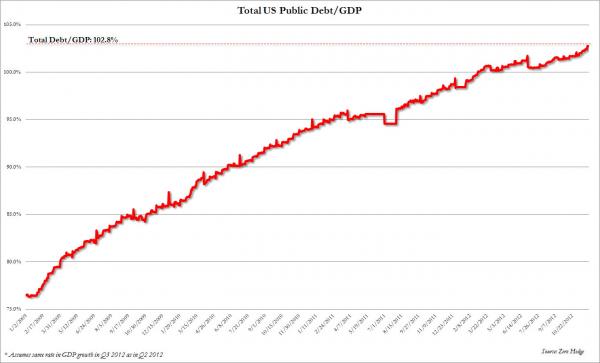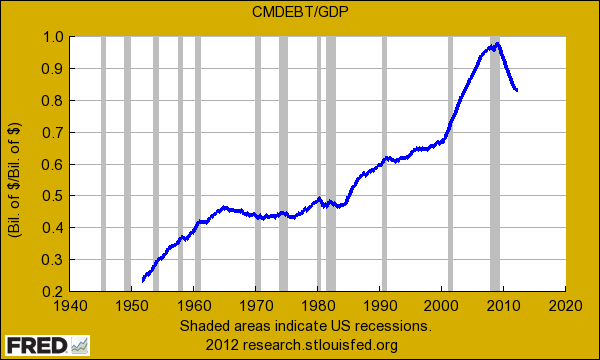December 6, 2012
Few people realize that the debt ceiling is aligning right on track with the fiscal cliff. Total public outstanding debt is now at $16.369 trillion and is only $63 billion away from breaching the limit. Not a coincidence that the fiscal cliff is also on the horizon. In essence, we are addicted to debt. However US households have been on a multi-year long process of deleveragingyet this is not being asked from banks or governmental institutions. Of course we knew this was coming. Anyone that was honestly objective realized that we were on an unsustainable path. Yet the name of the game is now about kicking the can furiously down the road so it falls beyond or line of vision. Then we act surprised when we arrive at the can and it has only gotten heavier with debt. So as we are T-minus a few days from the fiscal cliff, let us examine the debt ceiling.
Debt ceiling being breached
We are fast approaching the debt ceiling:
As stated, we are $63 billion away from hitting this. This week another $26 billion will be added courtesy of a few auctions so we will hit this before the New Year. Debt has been expanding at a furious pace:
The ECB is facing similar issues and they are essentially rolling over debt like a giant snowball. The reality is, the only way out of these mountains of debt is through a slow methodical inflation. The Fed is not even shy about admitting this. Why else would they be digitally printing money with no fear? They realize the debt destruction of American households is enough to offset the trillions of extensions and side programs that are being offered to the banking system. But after years of this, we are now seeing spillover effects via housing bubbles, student loan bubbles, food price hikes, healthcare costs soaring, and other items of that nature all in line with stagnant incomes.
An interesting parallel is looking at US households. Instead of adjusting to lower incomes in the 1990s and 2000s, US households decided to go into massive debt. Yet that access to debt has now been breached. In essence, US households hit their own debt ceiling and fiscal cliff:
It is rather clear where the deleveraging started to happen. This is now a typical recession. This is shifting the landscape of how much debt households can really take on. Yet for government and banks, there doesn’t seem to be a limit although globally we are starting to see peak debt situations. Many countries are having issues even servicing their interest payments let alone thinking about paying back the debt they owe. These bailouts are simply methods of extending lines of credits to pay off already existing lines.
US households are clearly facing the grim reality that maybe they were not as wealthy as they once thought. After all, many do not even have enough for retirement and millionswill completely rely on Social Security for years to come. This works well when you have a small older population with a large healthy working young population. Today we have a larger older population with a young less affluent population, with many not even working unfortunately.
So here we are hitting another debt ceiling limit right on time for the fiscal cliff. Combine this with 47 million Americans on food stamps and you need to ask yourself if this really sounds like an economic recovery.




No comments:
Post a Comment